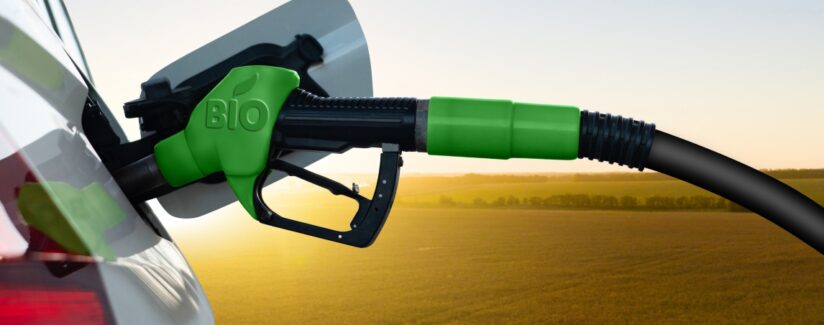
Is biodiesel a sustainable option?
11/09/2023
Biodiesel is a renewable fuel that is made from vegetable oils, animal fats or recycled restaurant grease.
Soybean oil is the most common oil used to produce biodiesel. Soybeans are also an important ingredient in many food products and in animal feed and we wanted to learn more about the sustainability of growing soybeans and producing biodiesel.
Sustainability is a Priority
Cindy Pulskamp is a farmer in North Dakota and also serves on the United Soybean Board and as a director for The Center for Food Integrity. She said sustainability is a priority for farmers and what that means varies from farm to farm.
“When you talk about sustainability, longevity is a big part of it. This year, the farm that I am part of will be 110 years old,” she said. “Sustainability is also always moving and changing. As soon as you learn something that makes you better, you’ve now raised the bar to make yourself better than you were. The sustainability that I look for in our soybeans and our farming operation is to always challenge ourselves to find new and better ways to produce a better product.”
Biodiesel helps improve sustainability by using every part of the bean, said Mac Marshall, vice president of market intelligence for the United Soybean Board.
“When you crush beans, you get about 80% meal and about 20% oil. The meal fraction is where the protein resides and most of that is used to feed livestock,” he said.
When it comes to the oil, some is used in foods such as cooking oil and salad dressing. About 30 years ago, farmers began funding research to find more ways to use soybean oil and developed biodiesel, Marshall said. Biodiesel is often used in vehicles such as trucks and buses.
Biodiesel and Food Prices
There has been some question if using soybeans for fuel has caused food prices to rise. A study conducted by Purdue University found that biofuels had little impact on food prices because only a small portion of soybeans are used for fuel. When soybeans are processed to create oil to meet biofuel demand, it means more meal is available for animal feed, driving down the price of animal protein products, the study determined.
“The economic model we created links the farm supply of soybeans to retail demand for various food products. What we found, after assessing the impact of rising soybean oil demand on prices at the grocery store, was little change to the Consumer Price Index (CPI),” said Jayson Lusk, the author of the study who was a food and agricultural economist at Purdue University at the time of the study. “While the increased demand for biofuels pushed up retail prices for oil between 0.16% and 4.41% across different categories, retail animal product prices for dairy, beef, pork, chicken and eggs declined between -0.01% and -0.16%.”
Biodiesel and Carbon Footprint
Biofuels are sustainable in other ways, Marshall said.
“Renewable diesel is effectively a one-to-one replacement for petroleum-based diesel fuel. Instead of having to utilize a gallon of petroleum diesel fuel, which is produced by extracting it from the earth, we are producing the same gallon of fuel that has the same utility without the extractive release of carbon into the atmosphere,” he said.
A full lifecycle analysis found that biodiesel produced from oilseed crops reduces greenhouse gas emissions up to 69% compared to petroleum diesel.
Pulskamp said biodiesel can help cut emissions in situations where electric vehicles are not feasible, such as large trucks or farm equipment that require more horsepower or areas that do not have the infrastructure for electric vehicles.
“Biofuels can bridge the chasm because biofuels take extensive amounts of carbon out of the atmosphere and you’re not losing horsepower,” she said. “Once petroleum is taken from the ground, it is gone. But soybeans are harvested and the next year we grow that crop again and produce more food and fuel. That’s one of the wonderful things about soybeans.”
When considering sustainability issues, farmers are a key part of the solution, Marshall said.
“First and foremost, we think about global nutrition and the need to continue to produce food for a growing population,” he said. “In the United States, we don’t have the luxury of bringing more land into production, nor would that be the best stewardship of a finite resource. So our farmers really have to focus on efficiency to utilize the most of what they have on each acre of land to grow the most.”
There are many tools available to help farmers be more sustainable, Pulskamp said, such as using genetics to breed plants that are healthier and learning how to best manage nutrients in the soil. “Deep in my heart, the best thing I can do is at the end of the day is knowing that I gave it my best to produce a really good product. I have talked to many, many of my fellow soy farmers and they believe the same thing.”

























